

Xiaomi 12 Pro Review: Great Phone With A Forgettable Design
source link: https://www.slashgear.com/799013/xiaomi-12-pro-review-great-phone-with-a-forgettable-design/
Go to the source link to view the article. You can view the picture content, updated content and better typesetting reading experience. If the link is broken, please click the button below to view the snapshot at that time.

Xiaomi 12 Pro Review: Great Phone With A Forgettable Design
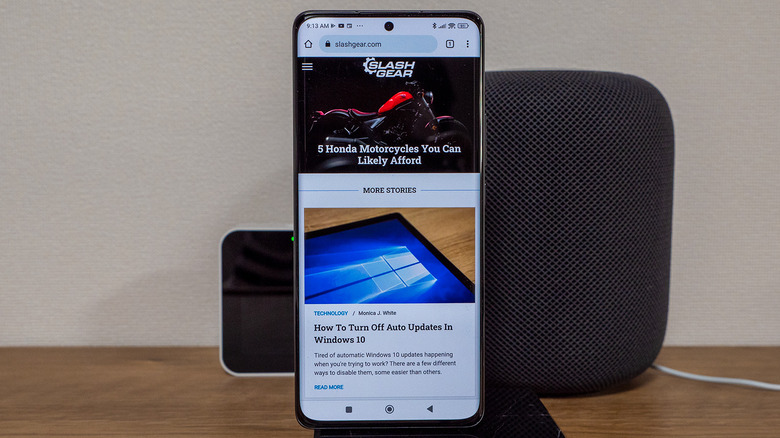
- Insane 120W charging speed
- 50MP sensors for all cameras
- Bright and vibrant screen
- Under-display heart rate sensor
- Aggressive thermal throttling
- Smaller battery than previous generation
- Unremarkable design
By now, most of the high-end flagships for the first half of 2022 have already made their way to the market. Samsung's Galaxy S22 series unsurprisingly took center stage, but it wasn't the first to debut this year. Xiaomi was quite possibly the earliest to show its hand with the Xiaomi 12, which packs early 2022 specs despite having debuted in December 2021. Being first has benefits, but also comes with some drawbacks, not the least of which is stumbling on mistakes earlier than competitors.
Xiaomi is now bringing its latest flagship series to global markets to prove it hasn't lost its touch and that it remains one of the strongest brands in the smartphone industry. We've spent some time evaluating the highest configuration in the series, the Xiaomi 12 Pro, to see whether the company still has its magic or if the flagship is just another forgettable face in a sea of look-alike smartphones.
Design and feel
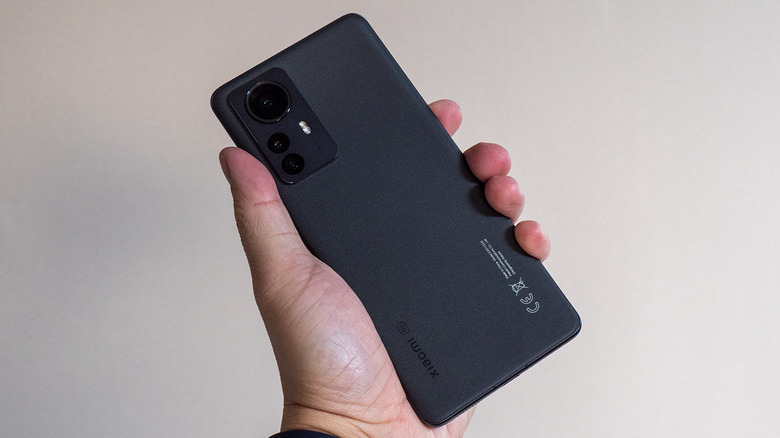
The Xiaomi 12 Pro has an almost oxymoronic design. On one hand, the phone is pleasant to look at and equally pleasant to hold. The curved edges of the screen and the glass back panel are like a blast from the past, along with the slightly rounded aluminum sides. The AG glass back's matte texture eliminates worries about fingerprint smudges, plus there's also a green vegan leather option that tries to continue this old design tradition among Chinese brands, though it still remains a novelty and an acquired taste.
On the other hand, the Xiaomi 12 Pro's design is also forgettable and, to some extent, dated. The large rectangular metal slab used for the camera bump has been the smartphone standard for two or three years now. The camera arrangement also bears some resemblance to the Xiaomi Civi and some other models from the same manufacturer. While the design does look neater, especially with lines marking different sections of the module, it also lacks a bit of character, especially compared to the funky Xiaomi Mi 11.
Admittedly, it's terribly difficult to be original with smartphone designs these days, especially when brands like Xiaomi keep on changing year after year. With similarities to its existing models, the company may finally be settling on a more consistent design language, which will be good for branding. Suffice it to say, if you simply want a smartphone with impressive looks, this is definitely not the model for you.
Display and audio
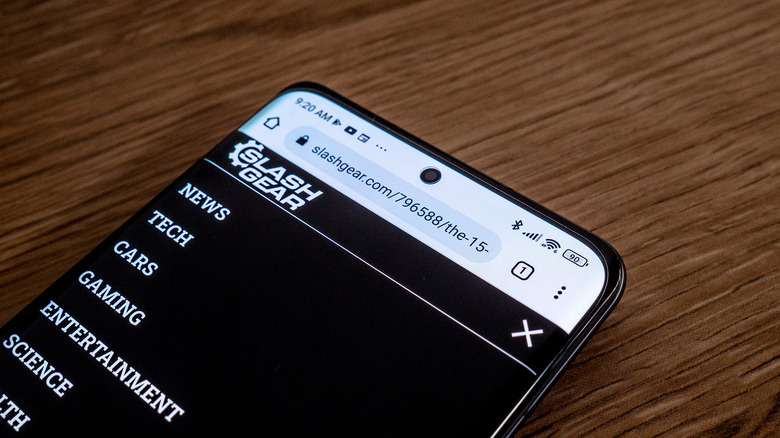
Fortunately, smartphones aren't just fashion items, and the Xiaomi 12 Pro definitely has a lot more to offer beyond appearances. Given that most owners will be looking at the screen rather than the back most of the time, it's important to know that the front of the phone is a lot more impressive and notable. Xiaomi's latest flagship definitely checks all the right boxes when it comes to display technology, which makes for a very pleasant user experience.
The 6.73-inch Samsung AMOLED E5 display boasts a high 3200x1440 pixel resolution, giving it an incredible pixel density that translates to crisp and detailed images, even when set to a 1080p FHD resolution. Colors really pop, and blacks are deep, making it a great choice for watching videos with high dynamic ranges. The max manual brightness is a bit lower than ideal, but the auto-brightness setting exceeds that, making it highly usable even in bright outdoor environments.
There's not much to be said about the phone's audio performance other than it's loud, rich, and well-balanced, as expected from stereo speakers tuned by Harman Kardon. The dedicated top-blasting speaker means there are no compromises to volume and range, and at least the upper bass frequencies are clearly discernible.
There is no headphone jack, of course, so you'll be forced to grab a USB-C to 3.5mm jack adapter or Bluetooth headphones if you want a better experience.
Performance and battery
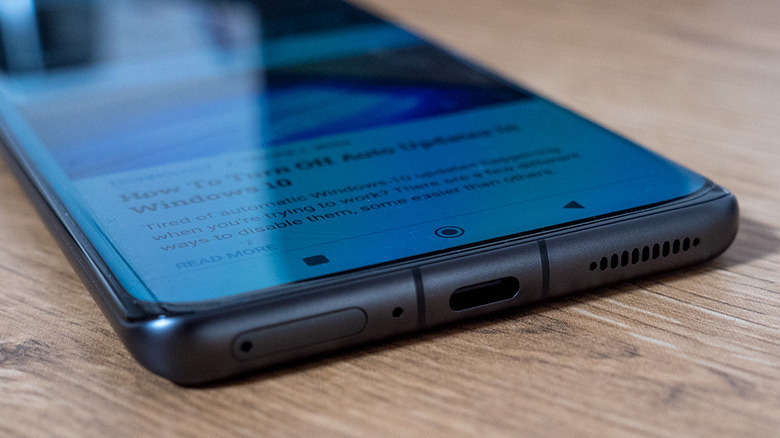
Xiaomi was the first to launch a phone that features the new Qualcomm Snapdragon 8 Gen 1 chipset. The Xiaomi 12 Pro's raw performance definitely shows the capabilities of this processor, especially when paired with 12GB of RAM augmented with 3GB of virtual memory. Benchmarks, however, are only part of the story, and Xiaomi's rush to be the first may have resulted in less than ideal consequences.
The company boasts about an improved cooling solution, and your fingers will definitely attest to that. No matter how hard you drive the phone, it doesn't get too hot to handle. Unfortunately, that might be because the Xiaomi 12 Pro has overaggressive thermal management, which means it throttles the processor sooner rather than later to keep temperatures low and the throughput more stable.
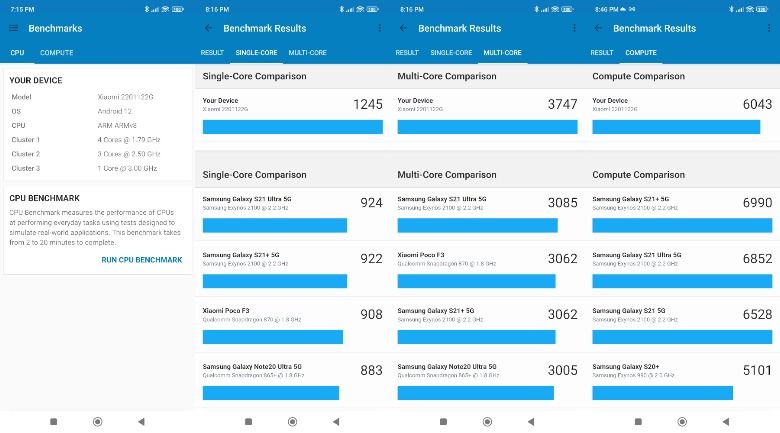 Ewdison Then/SlashGear
Ewdison Then/SlashGearThat translates to potential drops in frame rates in some games, particularly more intensive titles like "Genshin Impact." It might also cause some apps or benchmarks to shut down to prevent overheating even when there's still some wiggle room left to push the processor beyond its capacity. There is, sadly, no correct answer to this delicate dance of thermal management. Xiaomi simply chose to err on the side of caution and more consistent performance for a longer period of time instead of spiking the frequency briefly only to have it plummet quickly to cool down.
Despite its power-hungry specs, Xiaomi decided to give the 12 Pro a relatively small 4,600 mAh battery. It compensates for that with its super-fast 120W charging speed, but that only means you might have to charge it sooner rather than later. In practice, however, that doesn't happen too frequently, as you will be able to breeze through the day without reaching for the charger. When you do need to top up, it takes less than 20 minutes to fully recharge the battery.
Cameras
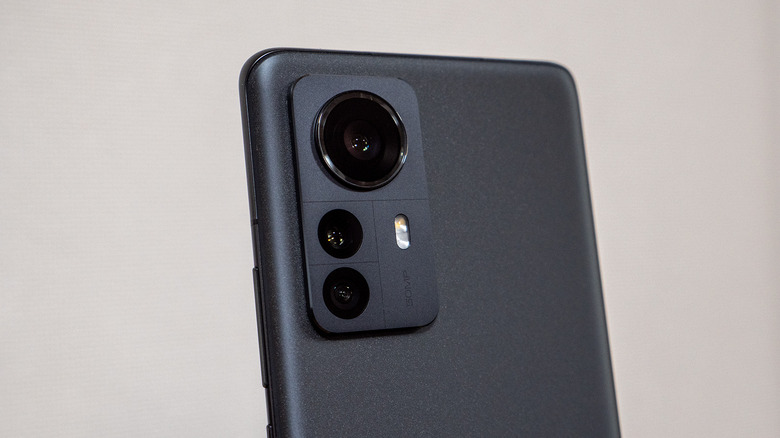
Compared to its Xiaomi 11T Pro predecessor, the Xiaomi 12 Pro ditches Samsung's large 108MP sensor for a 50MP Sony IMX707. That may sound like a downgrade, but that's an oversimplification of the photography story. What's more, Xiaomi also upgraded all the other cameras to 50MP sensors, albeit using Samsung's ISOCELL JN1, which makes for a more consistent experience overall.
The Xiaomi 12 Pro's main camera definitely deserves praise for the photos it produces, which are clear, vibrant, and colorful. In fact, it might actually be too colorful, which isn't that surprising since camera apps from this region tend to oversaturate to make images really pop. You can opt to use a different camera app or tweak the settings to get more realistic colors, and you'll still be guaranteed a high level of detail thanks to the impressive optics.
 Ewdison Then/SlashGear
Ewdison Then/SlashGear Ewdison Then/SlashGear
Ewdison Then/SlashGearBoth ultra-wide and telephoto cameras also use 50MP sensors, which means you don't have to sacrifice quality or resolution when you switch to those other options. The output of both shooters is decent, as expected, with good dynamic range and clear images even in low-light situations.
The one complaint about this almost perfect camera setup is the 2x optical telephoto lacking optical image stabilization. It doesn't offer many advantages over the main sensor, especially when it gets darker, making this camera almost superfluous.
Software
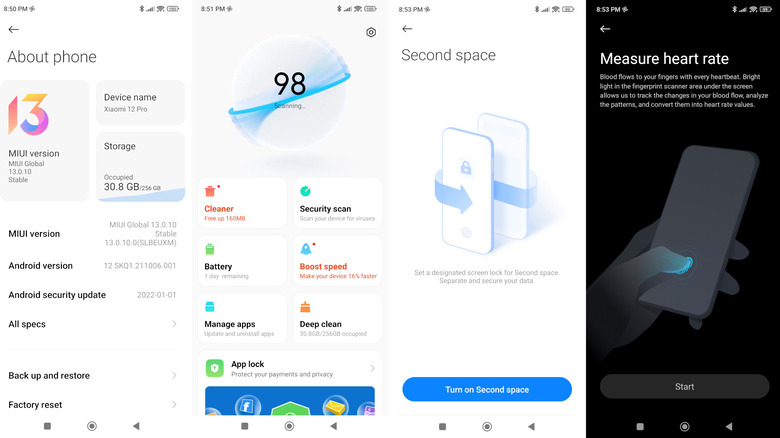
The Xiaomi 12 Pro runs the latest MIUI 13, which is fortunately already based on Android 12. Given Xiaomi's slightly confusing versioning, it's definitely reassuring that owners won't have to guess and wait for the latest Android version to arrive. The company's track record with Android updates hasn't exactly been the best, so it remains to be seen for how long it will support this new flagship.
MIUI 13 isn't that new, at least in terms of the changes that it has made on top of Android. While some might consider the tweaks to be heavy-handed, these are the features that Xiaomi's customers like, which is why the company continues to provide them despite criticism from some Android fans.
In addition to custom apps, there are admittedly some unique features that you won't find in other Android phone brands, especially Google's Pixel models. For example, Xiaomi's under-display heart rate sensor, which uses the fingerprint scanner, might not be completely accurate but could still give users a general assessment of their health without having to wear a smartwatch.
Final take
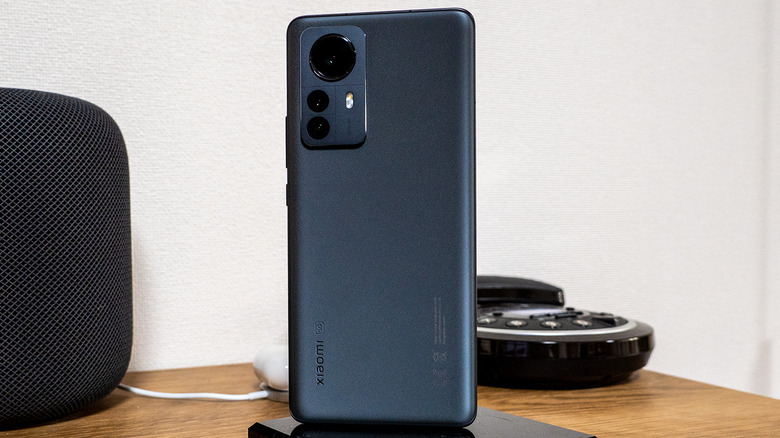
The Xiaomi 12 Pro is undoubtedly a champion when it comes to features and performance. With a great display, great speakers, and great cameras, there are only a few flaws in Xiaomi's formula. Performance throttling could probably be fine-tuned with a firmware update, and the smaller battery is easily balanced by the market's fastest charging technology.
You will, however, have a hard time picking the Xiaomi 12 Pro out of a lineup unless you explicitly ask for this model. And unlike past phones, Xiaomi no longer has qualms in raising its flagships to flagship prices, as well.
The Xiaomi 12 Pro starts at $999 with 8GB of RAM and 256GB of storage, though there is an even higher configuration with 12GB of RAM. The Xiaomi 12, on the other hand, starts at $749 with 8GB of RAM and 128GB of storage, while the "standard" Xiaomi 12X retails for $649 with the same memory configuration.
The Best Smartphones Of 2021 Ranked
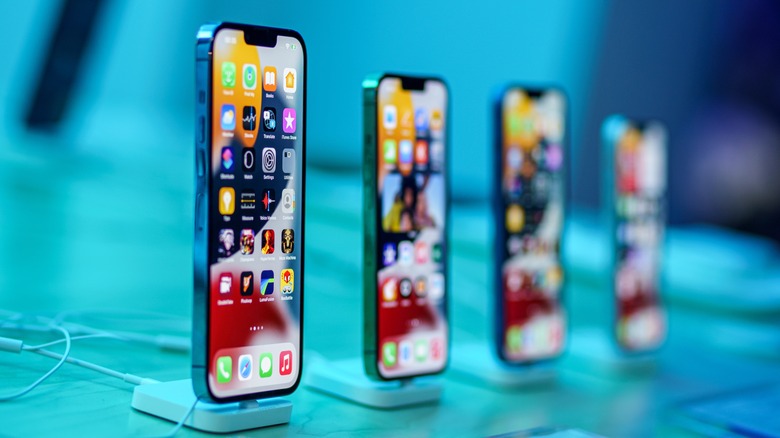
The smartphone market has someone for everyone, whether you're looking for a budget device that doesn't compromise on features or a flagship model sporting the latest and greatest hardware. Despite chip shortages, shipping delays, and production bottlenecks, manufacturers still managed to deliver an assortment of new handsets in 2021, including these top-of-the-line models.
1. iPhone 13
Love it or hate it, Apple makes great products. Samsung was a strong competitor this year, launching high-end smartphones of both the folding and non-folding variety, but the company still hasn't managed to outdo Apple at what Apple does best: offer a tightly integrated, cohesive, and highly useable ecosystem that seamlessly blends its own hardware, software, and services.
Buying an iPhone is more than just selecting iOS as your mobile operating system of choice. The handset works seamlessly with the Apple Watch, which itself still trumps anything you can get sporting Wear OS. In the same way, the iPhone works well with the iPad — which, again, exceeds any other tablet you can get for the simple reason that Android is entirely lacking on slates.
You don't have to buy into the wider Apple ecosystem to get the iPhone, of course, and it's possible the iPhone lacks a key feature you can't live without, whether that's a microSD card slot, built-in stylus, or 3.5mm audio jack. If you're content with a phone that doesn't include those finer trimmings, however, the iPhone 13 is worth serious consideration if you're looking for a high-end upgrade.
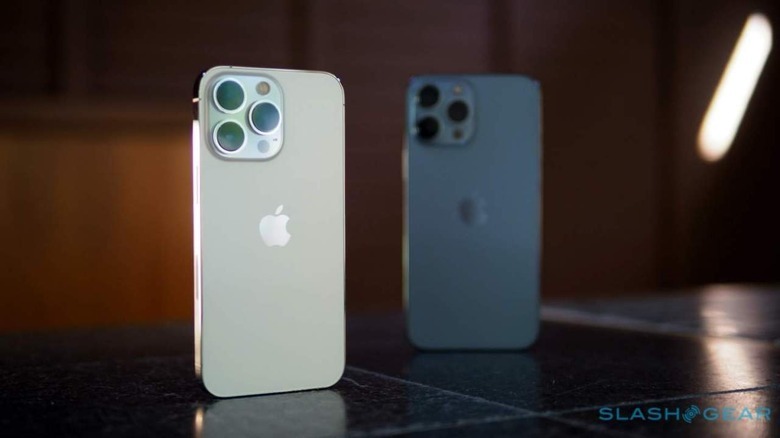
The iPhone 13 line is comprised of the iPhone 13 mini, iPhone 13, iPhone 13 Pro, and iPhone 13 Pro Max. These models range in size from 5.4-inches to 6.7-inches, with the best features being found in the two Pro options.
The iPhone 13 Pro packs a Super Retina XDR screen with ProMotion and Ceramic Shield, an IP68 water resistance rating, Apple's A15 Bionic chip, 5G support (including mmWave), ultra-wideband for using things like digital keys, Bluetooth 5, WiFi 6, and gigabit LTE.
Apple put a lot of focus on the cameras and related software with the iPhone 13 Pro. In terms of hardware, buyers get a "Pro" 12-megapixel camera system that includes wide, ultra-wide, and telephoto cameras. That is joined by the 12-megapixel TrueDepth camera on the front of the handset, which also powers the Face ID feature.
These cameras are joined by a variety of software features, including Apple's new "Cinematic mode" for recording movie-like videos. This new mode includes support for the TrueDepth, wide, and telephoto cameras, as well as Dolby Vision HDR.
The iPhone 13 Pro's camera features also include 6x optical zoom, 3x optical zoom for the telephoto lens specifically, support for macro video recording, improved low-light performance, "Photography Styles," and what Apple describes as an end-to-end workflow directly on the phone that includes editing in ProRes and Dolby Vision.
Not interested in Apple products? Fortunately, several excellent Android alternatives were released this year.
2. Galaxy S21
Samsung's Galaxy line has been around for years and there's a reason it has remained so popular. The latest and greatest installment in the series, the Galaxy S21, offers a huge number of features, but at a price not all consumers are willing to embrace. If cost isn't an issue for you, check out the Galaxy S21 Ultra 5G, the top model in the new line.
The Galaxy S21 Ultra 5G has a huge 6.8-inch Quad HD+ Dynamic AMOLED 2X Infinity-O display with 3200 x 1400 pixel resolution, giving it a pixel density of 515ppi (pixels per inch). Notable features include HDR10+ certification, a 120Hz refresh rate, a 40-megapixel "hole-punch" selfie camera, four rear cameras (10-megapixel telephoto F2.4 and F4.9 units, 108-megapixel wide-angle, and 12-megapixel ultra-wide), as well as a pressure-sensitive S Pen.
In addition to the LTE and 5G connectivity, the model also supports up to 2.4Gbps download speeds, offers Bluetooth 5.2, and includes ultra wideband (UWB) support for digital keys. The model is powered by the Snapdragon 888 alongside 12GB RAM and 512GB internal data storage.
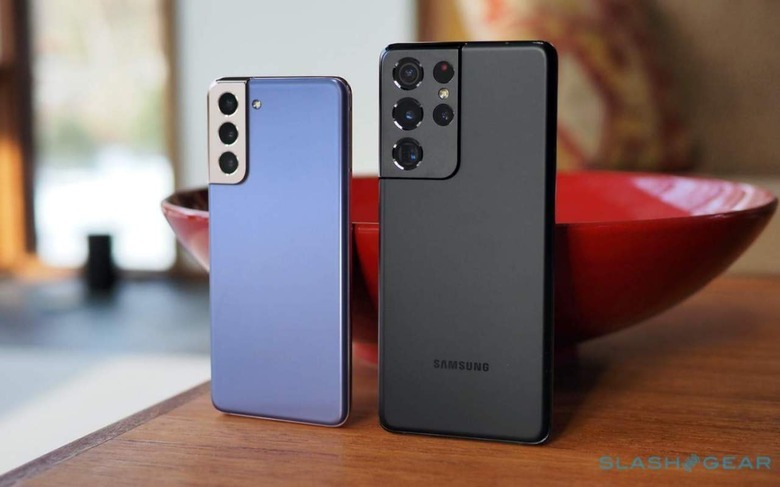
The S21 Ultra packs a bunch of hardware capabilities and software features targeting what consumers are often most interested in. This model's camera features are particularly notable with things like 100x "space zoom," a 40-megapixel camera combined with software that produces what Samsung claims are "studio-quality portraits," and support for shooting videos in 8K resolution.
The S Pen inclusion takes the S21 Ultra to the next level with tablet-like functionality, making it easier to handle a wide variety of advanced features – like editing videos and photos directly on the device. This is the first Galaxy model to pack a 5nm processor, enabling faster performance — including when it comes to AI-powered features — compared to previous models.
The 5000mAh battery combined with some efficiency features gives users a runtime beyond a full day (though it largely depends on how the device is used), plus there are convenience features like wireless PowerShare for charging, for example, a pair of true wireless earbuds with wireless charging support.
The powerful hardware, sophisticated software, and well-rounded array of features make the S21 Ultra one of the top smartphones on the market right now, though its price will be the biggest issue for many consumers. The Galaxy S21 5G (the one with the 6.2-inch display) starts at $799.99, but making the jump to the Ultra 5G model pushes the starting price to $1,200. There are some ways to reduce the price, including trading in certain devices for a substantial discount, but the final price will still likely be substantial.
3. Pixel 6
Though Google's Pixel has never managed to grab a significant share of the smartphone market, the company continues to update the line, arguably using its own hardware as a way to showcase Android in its purest form.
The Pixel 6 was released this year as the latest major installment in the smartphone family, bringing key features like Google's Tensor chip, the Titan M2 security chip with five years of updates, two rear camera, and what Google calls an adaptive battery that optimizes energy use so consumers can go longer between charging sessions.
Google historically offered a single camera with its Pixel smartphones, electing to enhance its mobile camera capabilities with software. This is known as computational photography, which utilizes artificial intelligence and software to improve the raw image data captured with the Pixel's camera. It was inevitable that Google would eventually increase the number of cameras included on its handsets, however, and the Pixel 5 marked the first time a model in this line was released with a dual-camera system. The Pixel 6 continues this trend with its own dual-camera array.
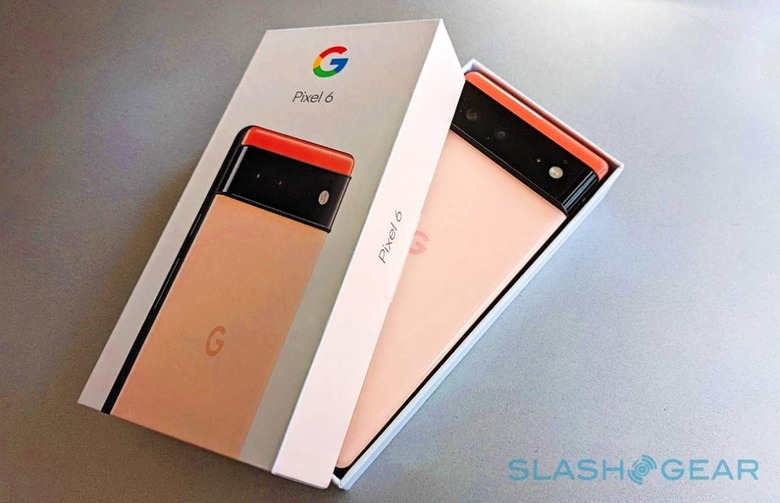
The Pixel 6 packs larger camera sensors compared to the previous model, which, among other things, enables the phone to gather 150-percent more light for brighter, higher-quality images in lower-light environments. This latest flagship model includes an ultra-wide lens for capturing larger scenes.
The software magic remains, including some features that would otherwise require you to fire up Photoshop. Magic Eraser is one excellent example: it resides on Google Photos and works by removing unwanted objects and people from images. Portrait Mode offers a blurred background for higher-quality selfies, plus there's Motion Mode for more dynamic action shots in environments with a lot of movement.
The model packs other notable features, including support for 5G networks, real-time language translations integrated into things like chat and podcast captions, an IP68 rating against dust and water exposure, and a high refresh rate for what Google calls "Smooth Display." Though you won't get a stylus like the one offered with the S21 Ultra, the Pixel 6 comes with some of its own perks, the best being its regular software updates known as feature drops.
Adding to the appeal is the somewhat lower price tag accompanying the Pixel 6; an unlocked version of the device with 128GB starts at $599, while the 256GB model starts at $699, making it a more economical choice for consumers who want high-end features and a bunch of storage space while staying well below a $1,000 price point.
4. Galaxy Z Flip 3
Many consumers aren't ready to embrace the foldable evolution yet, but this year brought a couple of excellent options for those who can't wait any longer. Samsung's Galaxy Z Flip 3 is the latest installment in the company's foldable product lines; this is the version that folds like an old-school clamshell flip phone, not to be confused with the book-style Galaxy Z Fold 3.
The Galaxy Z Flip 3 beats out the Z Fold 3 on this list for one simple reason: it is cheaper and, with the right trade-in device, the price can be dropped down to a very comfortable $325 or so. The model's defining feature is its flexible display, enabling the smartphone to fold in half horizontally across the body.
When unfolded, the Galaxy Z Flip 3 has a 6.7-inch screen; the device looks like a long, ordinary high-end smartphone. When folded, however, the length drops to just over 3-inches with a width a bit over half an inch. The screen packs a Full HD+ (2640 x 1080) Dynamic AMOLED panel with Infinity Flex Display, a 22:9 aspect ratio, 120Hz adaptive refresh rate, and 425ppi.
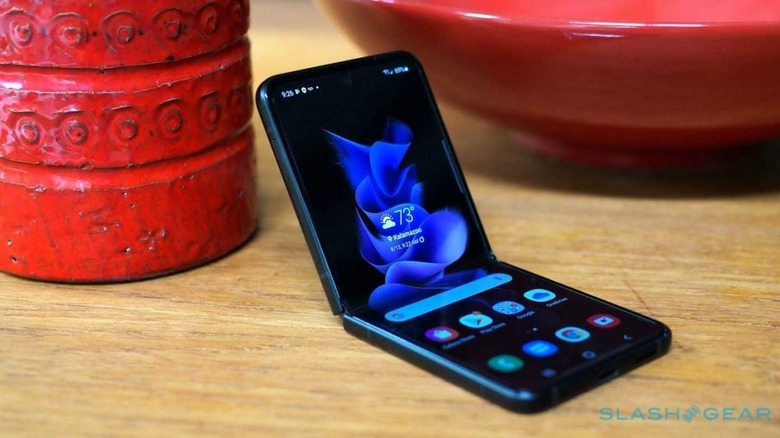
This main display is joined by a small 1.9-inch Super AMOLED screen on the rear of the device that shows basic details when the phone is folded. This rear display has a 260 x 512 resolution. The model packs many features you'd expect in a flagship model, including a 10-megapixel front-facing camera, while the rear camera array includes two 12-megapixel ultra-wide cameras, one with optical image stabilization, dual pixel autofocus, 78-degree field of view, and an F1.8 aperture. The other ultra-wide camera has an F2.2 aperture and a much wider 123-degree field of view.
The unique form factor aside, the Galaxy Z Flip 3 brings many of the same features you'd get on Samsung's other flagship handsets, including wireless charging, fast charging support, 5G connectivity, nano-SIM and eSIM, stereo speakers, and an array of sensors (accelerometer, proximity, etcetera). Other notable offerings include a 5nm processor, 8GB of RAM, up to 256GB of storage, Bluetooth 5.1, USB-C connectivity, a 3300mAh battery, and support for recording up to 4K videos.
5. OnePlus 9
This year brought the latest and arguably greatest OnePlus flagship, the OnePlus 9. Note that we're talking specifically about the US version of this phone; the model is available in other markets, as well, and its exact features may vary a bit depending on where it is purchased.
The OnePlus 9 features a 6.55-inch Fluid AMOLED display with a 120Hz refresh rate, 20:9 aspect ratio, and 2400 x 1080 resolution. The handset is powered by the Snapdragon 888 and it runs OnePlus's OxygenOS based on Android 11. Storage and memory are notable at 128GB/8GB, while the battery is on the large end of the spectrum with a 4500mAh capacity (fast charging is supported).
The handset packs a main 48-megapixel camera with a Sony IMX689 sensor and an F1.8 aperture lens; this is joined by an ultra-wide 50-megapixel model sporting the Sony IMX766 sensor and an F2.2 aperture lens. Interestingly enough, OnePlus also includes a 2-megapixel monochrome camera, which is a relative rarity among smartphones (Huawei included something similar with its P20 Pro and P10 models).
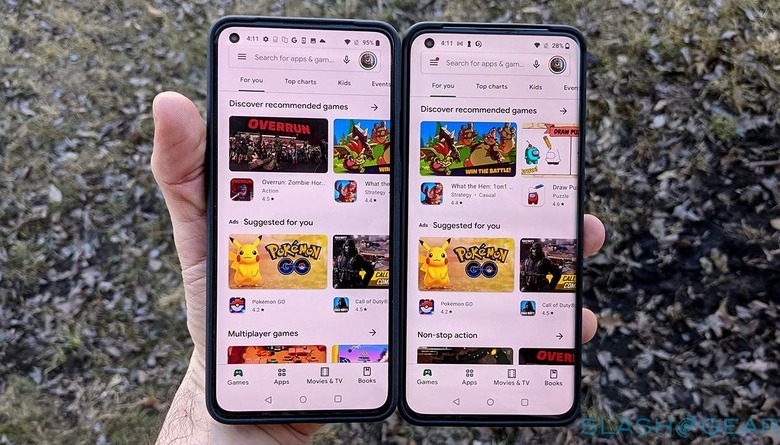
The camera features are extensive, including support for recording in 4K at 60fps and 8K at 30fps, plus there's slow-motion at up to 480fps, support for capturing time-lapses in 4K resolution, and there's a dual-LED flash. The front camera, meanwhile, skews toward an average offering at 16-megapixels with electronic image stabilization, fixed focus, and an F2.4 aperture.
Consumers looking for a bit more can check out the OnePlus 9 Pro variant, which boosts the features with a similar uptick in price. This model packs a more notable 6.7-inch Fluid AMOLED display with LTPO, 120Hz refresh rate, 3216 x 1440 resolution, 20.1:9 aspect ratio, and 10-bit color depth.
The model is likewise powered by a Snapdragon 888 alongside an X60 chipset for 5G connectivity. Storage and memory are higher at 256GB/12GB, respectively, while the battery sits at 4500mAh with fast charging support and 50W wireless charging.
The cameras are likewise upgraded with a 48-megapixel main camera packing optical image stabilization and an F1.8 aperture, a 50-megapixel ultra-wide camera with a freeform lens, an 8-megapixel telephoto camera with optical image stabilization, and the same 2-megapixel monochrome camera found on the non-Pro version.
The OnePlus 9 Pro is the one you'll want to consider if you're looking to upgrade to a model you'll keep for a while. The price is high at $1,069, though OnePlus currently lists the model at a discounted $849. Consumers in the US have two options: an unlocked model they can take to their favorite carrier or a T-Mobile version that runs on the provider's network.
6. Galaxy Z Fold 3
One of the most interesting Android smartphones released this year is also the most expensive: Samsung's massive book-style Galaxy Z Fold 3 foldable. This model has a 7.6-inch Infinite Flex Display, essentially making it a small tablet when unfolded; the screen is a more typical 6.2-inches when folded.
Given that the Z Fold 3 is essentially a hybrid device that sits between a smartphone and tablet, it's no surprise Samsung offers S Pen Pro and S Pen Fold accessories, enabling users to draw and write on the display the same way they would a Note device or a Samsung tablet.
The model packs an IPX8 water resistance rating, which means the device can handle exposure to water to depths of up to 5ft for up to half an hour. The latest Fold is powered by a Snapdragon 888 octa-core processor; it packs up to 512GB of storage and 12GB of memory, a 4,400mAh battery, and a 120Hz adaptive display refresh rate.
The camera array is notable with three units on the back: a 12-megapixel wide-angle, 12-megapixel ultra-wide-angle, and 12-megapixel telephoto cameras. The front, meanwhile, sports two cameras: a main 4-megapixel unit and a 10-megapixel front cover camera.
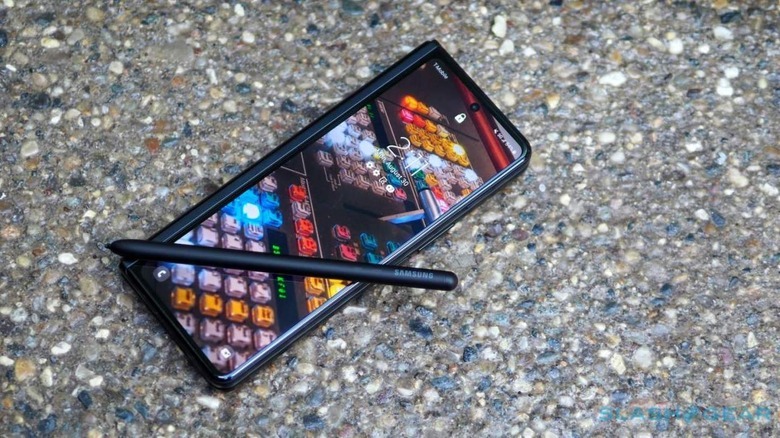
The camera loadout isn't as impressive as what you get with the S21 Ultra, but the device's main purpose resides in its unique form factor, not its photo capabilities. Samsung leverages the ultra-wide display by offering unique multi-tasking features, delivering what the company refers to as "PC-like productivity" — though, keep in mind that only some apps support the Flex mode.
The Galaxy Z Fold 3 is a productivity powerhouse, targeting consumers who often do business and get work done directly on their handsets. The tablet-like form factor enables users to leave their dedicated tablets at home, instead unfolding their smartphone to markup documents, sign paperwork, edit videos, and other tasks that are more difficult on smaller traditional form factors.
There's one huge downside to this model, however, and that is its astronomical price tag. With a starting price of $1,900 unlocked, that makes the phone more expensive than many nice ultrabook laptops and, for example, the 12.9" iPad Pro with 1TB of storage.
Consumers are very much paying for the novelty of having a large folding smartphone, one that, while still excellent, isn't going to stand up against something like an M1 iPad Pro when it comes to performance, app variety, and the user interface. For this reason, buyers should be mindful of what they truly need out of a mobile device and whether the Galaxy Z Fold 3 is able to meet those needs.
If you decide to pick up a model, keep in mind that Samsung will drop the price to $849 USD with certain trade-ins, plus it includes the Galaxy Buds 2 for free with the purchase (if you buy the device directly from Samsung's website, at least).
7. Huawei P50 Pro
Last but not least is the Huawei P50 Pro, a high-end smartphone the company released this year with one massive problem: it doesn't run Android. This may be a dealbreaker for many consumers, but if you don't mind being limited to Huawei's HarmonyOS, there's a lot to like about this flagship model.
The Huawei P50 Pro sports a 6.6-inch OLED display with a 120Hz refresh rate and 2700 x 1228 resolution. The model is powered by the Snapdragon 888 4G alongside Adreno 660 graphics; there's 8GB/256GB memory and storage, respectively, as well as a 4360mAh battery with fast and wireless charging support.
Huawei focused extensively on the P50 Pro's camera array with four units on the back: a 50-megapixel "True-Chroma" module packing optical image stabilization, a 40-megapixel True-Chroma F1.6 module, a 13-megapixel ultra-wide-angle F2.2 module, and a 64-megapixel telephoto camera with optical image stabilization, autofocus, and F3.5 aperture. The cameras include phase focus and contrast focus options, plus there's hybrid and digital zoom for those times when the optical zoom isn't enough.
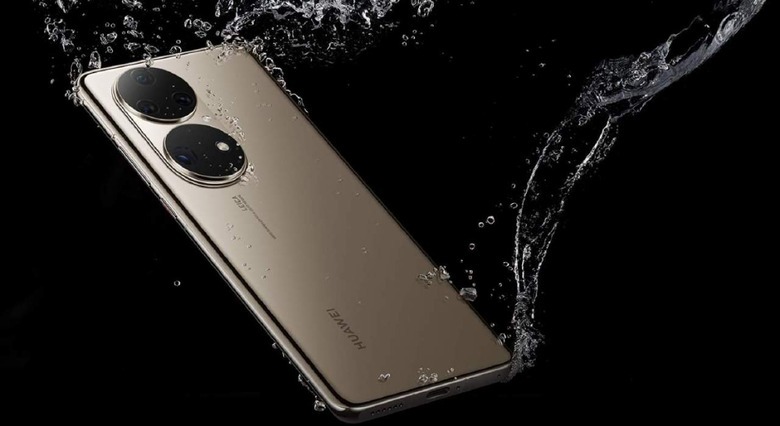 Huawei
HuaweiThe camera hardware is paired with a variety of software-based features, including an AI-powered "Cinemagraph" mode, 4K Predictive Focus, time-lapse shooting, audio zoom, macro and portrait modes, monochrome camera capture, Moving Picture, and more. The front-facing camera, meanwhile, includes a 13-megapixel wide-angle module combined with software features like smart eye tracking, panorama, AR lenses, and slow-motion selfie capture.
Other notable features include an IP68 rating, meaning the phone has a degree of resistance against dust and water, plus there's a dual-SIM version of the handset with 4G LTE support, Bluetooth 5.2, USB-C connectivity, NFC, GPS, and the typical array of sensors found on flagships (fingerprint, gravity, infrared, gyroscope, ambient light, etcetera).
Again, the big downside here is the P50 Pro's lack of Android and Google services; users are instead given access to Huawei's own HarmonyOS, which, while nice, comes with far fewer app options than the average consumer is used to. You may not be able to download your favorite apps, and that could be a big deal, particularly if you need certain unsupported apps for work. Speaking of work, depending on the industry, you may not be allowed to use a Huawei handset for business purposes due to security rules.
Given the P50 Pro's high price (around $1,200 USD, depending on configuration) and its many downsides, it's really not advisable for someone outside of China to purchase the model — there are alternatives like the S21 Ultra that come in around the same price point with many of the same or similar features, but with Android and Google services. With that said, the P50 Pro — from a hardware standpoint — is still one of the most notable flagships released in 2021.
Recommend
About Joyk
Aggregate valuable and interesting links.
Joyk means Joy of geeK